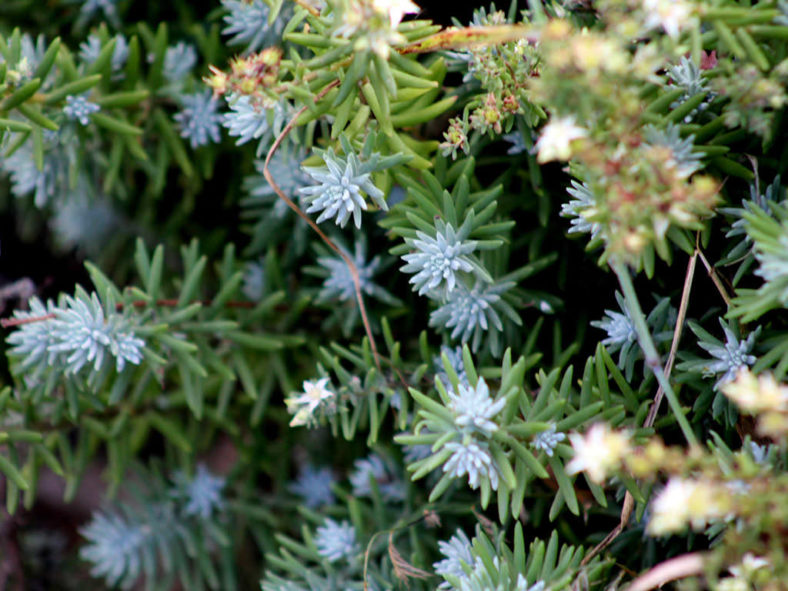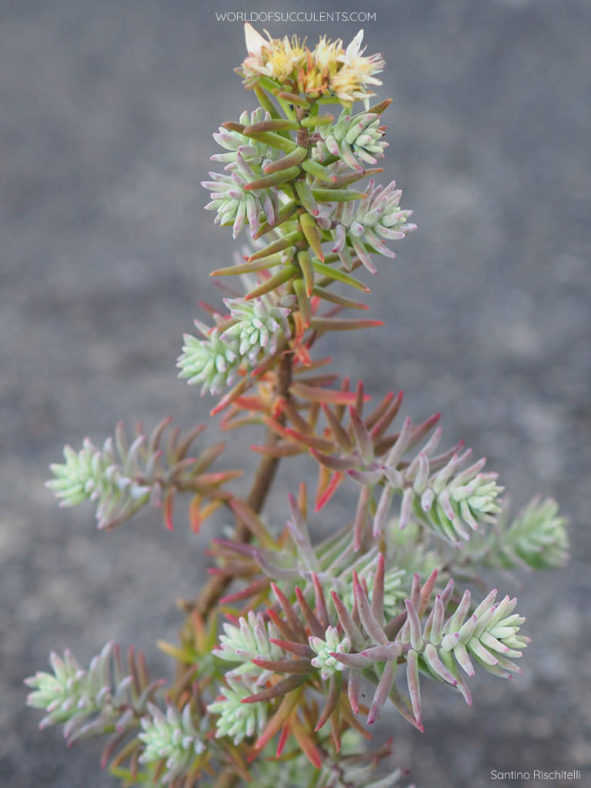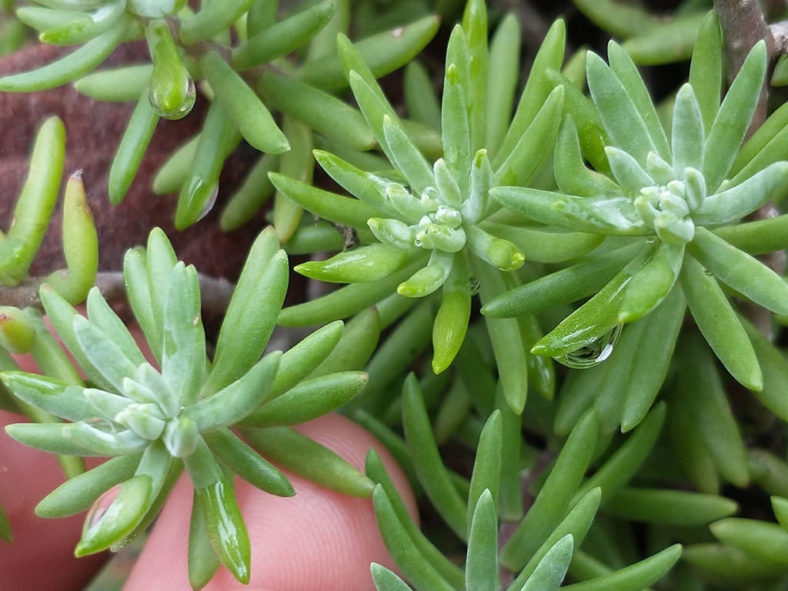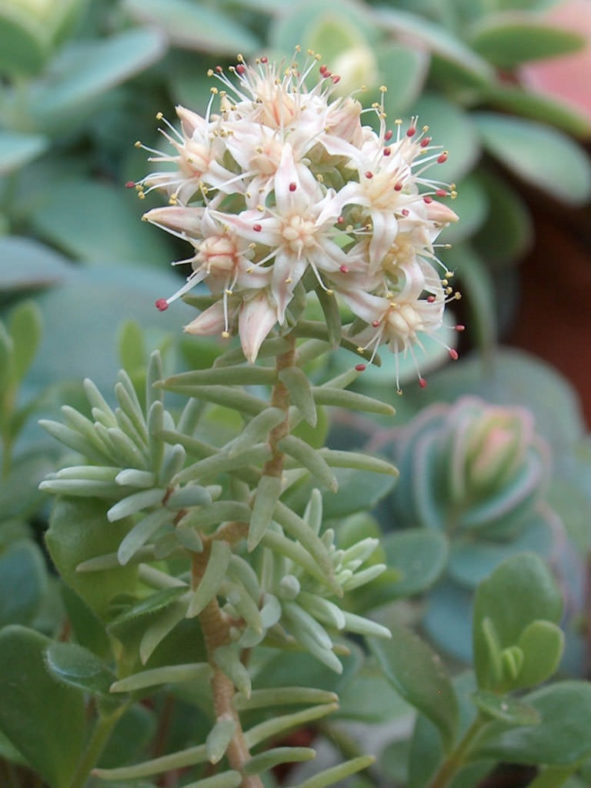Scientific Name
Sedum griseum Praeger
Common Name(s)
Gray Sedum
Scientific Classification
Family: Crassulaceae
Subfamily: Sempervivoideae
Tribe: Sedeae
Genus: Sedum
Etymology
The specific epithet "griseum (GREE-see-um)" means "gray" and refers to the color of the young leaves.
Origin
Sedum griseum is native to Mexico (Guanajuato, Jalisco, Michoacán, Querétaro, Trans-Mexican Volcanic Belt, Central Mexican Plateau).
Description
Sedum griseum is a much-branched succulent subshrub with upright or sometimes procumbent stems and small, finely papillose leaves. The stems are slender, with gray-green flaking bark and pale green or gray-brown papillose twigs. They can grow up to 3 feet (90 cm) long. The leaves are green, often subglaucous, becoming suffused with red in full sun. They are linear or lanceolate-linear, biconvex in cross-section, either sessile or on pedicels, measuring up to 1.1 inches (2.8 cm) long and about 0.12 inches (0.3 cm) wide. The young leaves are covered with a powdery wax, giving the plant a frosted appearance.
The flowers are star-shaped, usually 5-merous, with whitish petals and yellow anthers, and appear in cymes with 1 to 12 branches in late winter.

How to Grow and Care for Sedum griseum
Light: This succulent grows best in locations where it will enjoy the full sun for at least six hours daily. It will tolerate partial shade but will not thrive in deep shade. Keep your indoor plant in a sunny window or under artificial lights.
Soil: S. griseum does not like to sit in waterlogged soil, so drainage is essential to prevent root rot. Choose a well-draining soil mix.
Temperature: This plant is tolerant of heat and freezing temperatures. S. griseum can withstand temperatures as low as 25 °F (-3.9 °C). USDA Plant Hardiness Zones 9b to 11b, 25 to 50 °F (-3.9 to 10 °C).
Watering: From spring through fall, water thoroughly and wait for the soil to dry out before watering again. In winter, water your plant just enough to keep it from shriveling. Avoid wetting the leaves, stems, and flowers when watering.
Fertilizing: Feed with a balanced organic fertilizer in spring. Feeding is unnecessary if the plant is divided annually and provided with fresh soil.
Repotting: Repot your plant when it outgrows its current pot by moving it out to a larger container to hold the plant better. Spring is the best time to repot S. griseum. Make sure the soil is dry before you begin repotting.
Propagation: Once you have one S. griseum, it is easy to make more by taking stem cuttings and dividing the plant. It is also easy to grow from seed. Take cuttings in spring when the plant is in active growth. Once it has finished flowering, it is the right time for division. Spring or summer is the best time to sow the seeds.
Learn more at How to Grow and Care for Sedum.
Toxicity of Sedum griseum
S. griseum is not listed as toxic for people but can be mildly toxic to pets and children.
Links
- Back to genus Sedum
- Succupedia: Browse succulents by Scientific Name, Common Name, Genus, Family, USDA Hardiness Zone, Origin, or cacti by Genus
Photo Gallery
Click on a photo to see a larger version.


